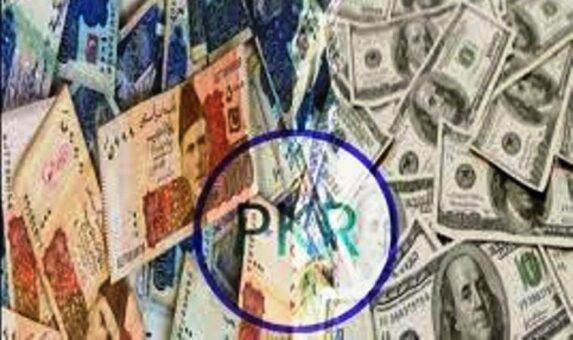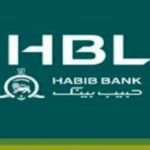KARACHI: Habib Bank Limited (HBL) on Thursday declared 51 percent decline in net profit during the first half ending June 30, 2019.
The profit after tax of the bank declined to Rs3.927 billion during first half (January – June 2019) as compared with Rs8.128 billion in the corresponding half of the last year.
According to half yearly financial results submitted to Pakistan Stock Exchange (PSX), the bank said that its results for the first half 2019 were impacted by two specific market events.
The further 15 percent depreciation in the value of rupee, which was impacted Rs 6 billion.
A 9 percent fall in the continuously declining PSX, which was impacted Rs1.9 billion.
The incremental impact of these, compared to the first half of 2018, is Rs4.8 billion. “Resultantly, reported profit before tax of Rs9.9 billion for first half 2019 is Rs4.2 billion or 30 percent lower than for the same period last year.”
The bank further said that the retrospective imposition of super tax on 2017 earnings has increased the effective tax rate for the half year to 60 percent.
Profit after tax for the first half 2019 is therefore Rs3.9 billion compared to Rs 8.1 billion for the first half of 2018.
Earnings per share for the period under review are at Rs 2.53.
The bank said that its core domestic business continued to grow steadily. Total deposits increased by 6.8 percent, crossing the Rs. 2.0 trillion mark, with half the growth coming from current accounts.
The domestic mix of current accounts improved by 66bps to 38.2 percent while the CASA ratio of 85.2 percent was just below December 2018 levels of 85.4 percent.
Domestic advances increased marginally over December 2018 levels but the strong run-up in 2018 resulted in average advances for the first half 2019 being 25 percent (Rs 180 billion) higher than in the first half of 2018.
The Consumer business continued its steady growth with average consumer loans increasing by 17 percent over the first half of 2018.
Overseas deposits and advances both increased in US dollar terms with the impact more pronounced in Rupees.
HBL’s total deposits thus grew by 7.8 percent over December 2018 to Rs 2.3 trillion with net advances of the Bank up by 5 percent to Rs 1.1 trillion.
Average domestic deposits, driven by Rs 62 billion growth in average current accounts, increased by around Rs 100 billion.
The average balance sheet thus increased by Rs 135 billion (6 percent). The net interest margin in the domestic business improved by 59 bps as earning asset yields improved significantly due to re-pricing of loans and rollover of maturing investments at higher rates.
Domestic net interest income for the first half of 2019 is thus 18 percent higher than for the same period last year.
With a 14 percent improvement from the international business in Dollar terms, total net interest income for HBL increased by 20 percent, to Rs 47.7 billion.
Fee income continued to improve, increasing by 16 percent over the first half 2018, to Rs 10.7 billion as international fees were restored to their prior year levels.
Domestic fee growth of 15 percent was robust, achieved due to strong performances from the card related business, trade fees and investment banking income.
The sale of previously impaired equities resulted in a realized capital loss of Rs 1.8 billion, but with no overall P&L impact.
“Excluding this, income from treasury related activities increased to Rs 3.4 billion in the first half of 2019 compared to Rs 2.8 billion in the same period last year,” the bank said.
Core non mark-up income for the first half of 2019, excluding the revaluation loss on the Bank’s open position and the capital loss described above, increased by 13 percent YoY to Rs 15.8 billion.
Headline administrative expenses for the first half of 2019 increased by 24 percent to Rs 45.0 billion. This was largely driven by an increase in the ongoing remediation, legal and regulatory costs related to the Bank’s New York branch.
The substantial impact of Rupee depreciation on international expenses and the incremental cost of HBL’s new office building also contributed to the expense growth.
Excluding these major items, expenses increased by 11 percent.
Total provisions for the first half of 2019 are Rs 511 million. Net reversals in the domestic business continue, although they are considerably lower, notwithstanding an improved recovery performance.


